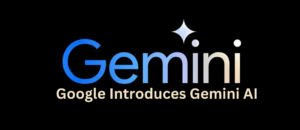Embracing Generative AI heralds accelerated coding, yet it introduces the challenge of managing an increased volume of code. Navigating this duality becomes crucial as businesses set higher expectations, reshaping the landscape of technology implementation.
How AI-assisted code development can make your IT job more complicated.
Artificial intelligence (AI) has proven to be a potent productivity tool for developers, but its influence extends beyond efficiency, reaching into the realm of career aspirations. The ascent of AI-assisted code development is not only revolutionizing coding practices but is also creating opportunities for technology managers and IT professionals to assume broader roles within the business.
According to Ved Maurya, an Architect .” The ability to generate code on demand across various languages, from Java to Python, accompanied by insightful recommendations, is becoming commonplace. A recent survey by Sourcegraph reveals that 95% of developers are already incorporating Copilot, ChatGPT, and other generative AI tools into their workflows, signaling a transformative shift in the industry.
The emergence of generative AI tools poses a thought-provoking question: Despite the potential for significant productivity gains, will the jobs of technology professionals become more intricate in an era of heightened automation?
While the automatic generation of code promises efficiency, it introduces the imperative of guaranteeing that the entire organizational code adheres to stringent business and governance standards. Effectively managing this proliferating codebase demands elevated levels of cohesion, accountability, and security. Consequently, these evolving demands are likely to usher in new roles and responsibilities for developers, reflecting the evolving landscape of technology in the face of increased automation.
In the realm of software development, the advent of tools like ChatGPT brings forth a significant shift. While these large language models aid programmers and software engineers in generating code across a spectrum of languages, certain aspects of the job, particularly security and quality assurance tasks, remain indispensable.
Most of the code that is generated is security-vulnerable and might not pass enterprise-grade code.” Despite the acceleration in coding facilitated by AI, it is crucial to approach the generated code with caution. Ensuring security requires a meticulous analysis of the code, identifying vulnerabilities, and implementing fixes—an essential step that, although time-consuming, is imperative to maintaining the integrity and resilience of enterprise-grade software.
The introduction of generative AI in coding brings about a challenge reminiscent of the complexities witnessed with the rollout of cloud computing. While generative AI initially simplifies code creation, analogous to the ease of application acquisition in the early days of on-demand IT, it also gives rise to a potential challenge—code sprawl.
Research indicates that the ease of generating code through AI is contributing to a continuous expansion of the codebase. In a survey conducted by Sourcegraph, a majority of the 600 developers expressed concerns about managing the influx of new code facilitated by generative AI. This surge in code, coupled with the challenges of code sprawl and its contribution to technical debt, has been termed “Big Code” by the survey authors.
Even before the advent of generative AI, nearly seven in 10 developers reported a fivefold growth in their codebase over the last three years. A similar number struggled with comprehending existing code generated by others, highlighting the persistent challenges associated with the ever-expanding complexity of code.
The accelerated pace of code delivery not only demands efficiency but also raises the bar for applications to swiftly adapt to changing requirements—a challenge that comes with heightened expectations from the business. Ved Maurya emphasizes a shift towards a modeling-based approach, moving away from traditional coding governed by if-then-else rules.
This evolution underscores the growing importance of design thinking in the realm of technology. IT professionals should anticipate an increased emphasis on design thinking, which will become a more integral part of developers’ roles. Ved Maurya suggests that those working with AI can distinguish themselves by cultivating softer skills in design and design thinking. Enhancing capabilities in these areas not only improves a developer’s communication skills but also facilitates presenting data science and AI insights. Additionally, it contributes to the redesign of processes and the way humans interact with technology, maximizing the benefits that AI can bring to enhancing results.
It’s essential to highlight that generative AI has the potential to enhance the productivity of certain technology workers, particularly those involved in maintenance and support within the software stack, AI is likely to serve as more of an assistance than a complication, streamlining tasks and contributing to overall efficiency.







